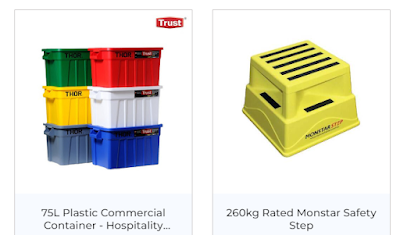Steps to Choosing Material Handling Technologies that Last
Material handling technologies form the backbone of
these operations, influencing productivity, safety, and ultimately,
profitability. However, in a market flooded with options, you can selectmaterial
handling from teamsystems.co.nz
that not only meet immediate needs but also endure the test of time. To
navigate this challenge successfully, businesses must undertake a systematic
approach.
Step 1: Understand Current
and Future Needs
The first step in selecting material handling
technologies is to conduct a comprehensive assessment of your organization's
current and anticipated future needs. This involves evaluating factors such as
the volume and variety of materials to be handled, throughput requirements,
operational constraints, and any anticipated growth or changes in the business.
By gaining a clear understanding of these parameters,
businesses can identify the specific functionalities and capabilities required
from material handling technologies both now and in the foreseeable future.
This proactive approach helps avoid the need for frequent upgrades or
replacements due to outgrowing the initial system.
Step 2: Conduct Thorough
Research
With a solid understanding of requirements in place,
the next step is to conduct thorough research on available material handling
technologies. This includes exploring a wide range of options, from traditional
solutions such as conveyor systems and forklifts to advanced automation
technologies like robotic arms and automated guided vehicles (AGVs).
During the research phase, it's crucial to consider
not only the initial cost of acquisition but also factors such as maintenance
requirements, scalability, compatibility with existing systems, and vendor
support. Additionally, gathering insights from industry peers, attending trade
shows, and consulting with experts can provide valuable perspectives on the
suitability and reliability of different technologies.
Step 3: Assess Reliability
and Durability
When evaluating material handling technologies,
reliability and durability should be top priorities. Investing in solutions
that are built to withstand the rigors of daily operations minimizes the risk
of unexpected downtime and costly repairs.
One way to assess the reliability of a technology is
by examining its track record and reputation in the industry. Solutions from
reputable manufacturers with a history of delivering reliable performance are
often a safer bet. Additionally, reviewing warranty terms and service agreements
can provide insights into the level of support available in the event of issues
or failures.
Step 4: Consider Scalability
and Flexibility
In today's rapidly evolving business environment,
scalability and flexibility are critical considerations. Material handling
technologies should not only meet current needs but also have the ability to
adapt and grow alongside the business.
When evaluating potential solutions, assess their
scalability in terms of capacity, functionality, and integration with other systems.
Look for technologies that offer modular designs or customizable features that
can be easily expanded or reconfigured as requirements change.
Step 5: Factor in
Maintenance and Support
No matter how reliable a technology may be, regular
maintenance and support are essential to ensure continued performance and
longevity. Before making a decision, carefully evaluate the maintenance
requirements of the chosen technology, including routine servicing, spare parts
availability, and technical support.
Additionally, consider the expertise and support
offered by the vendor or manufacturer. Choose suppliers that provide
comprehensive training programs for operators and maintenance staff, as well as
responsive customer support channels to address any issues or concerns
promptly.
Conclusion
In conclusion, choosing material handling technologies that stand the test of time requires
careful planning, research, and evaluation. By following the steps outlined in
this blog – understanding current and future needs, conducting thorough
research, assessing reliability and durability, considering scalability and
flexibility, factoring in maintenance and support, calculating total cost of
ownership, and planning for future upgrades – businesses can make informed
decisions that maximize efficiency, productivity, and profitability in the long
run. With the right approach, material handling technologies can become
enduring assets that drive success and growth for years to come.




Comments
Post a Comment